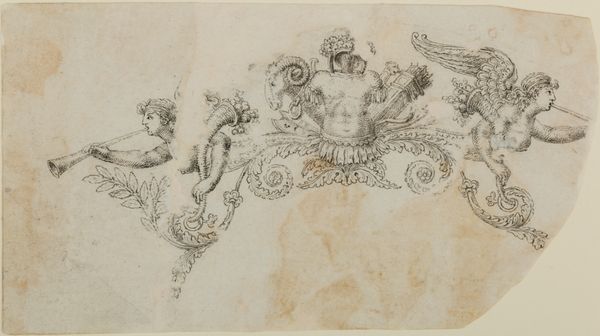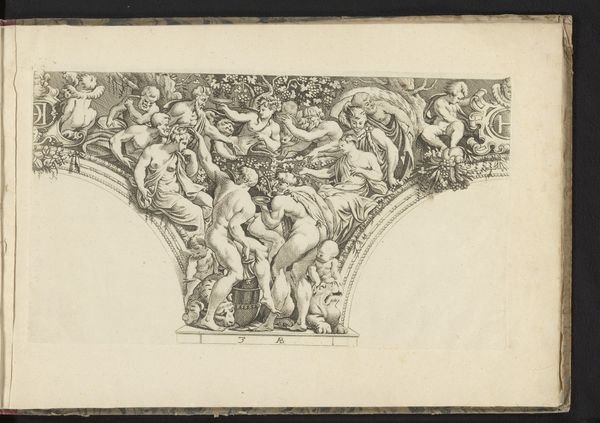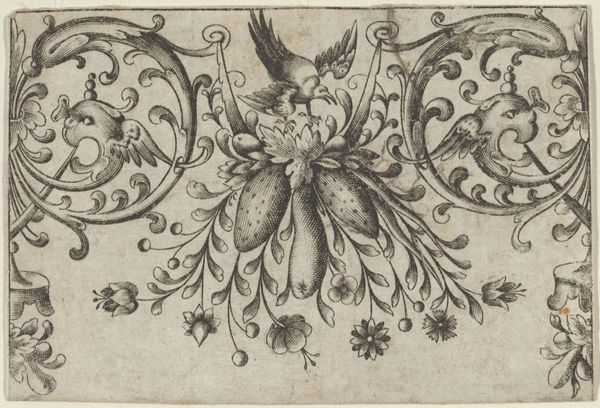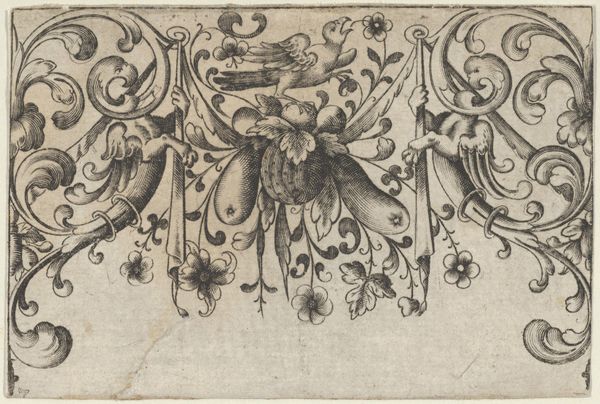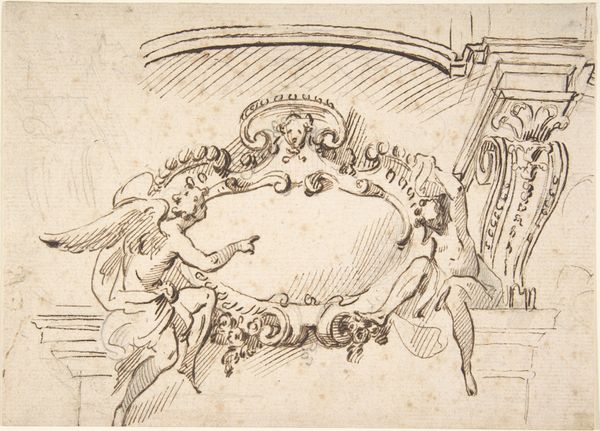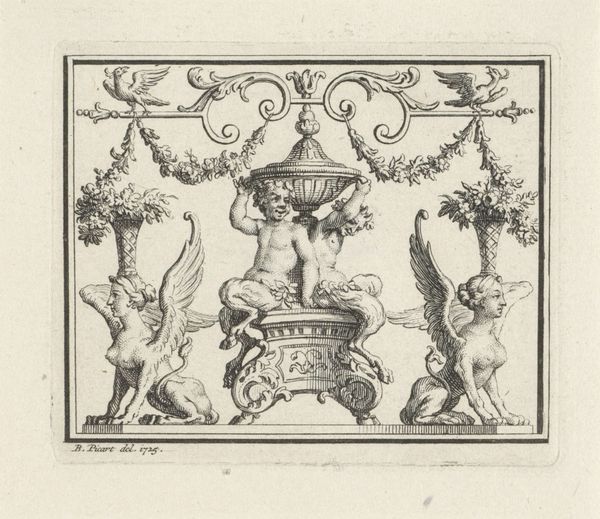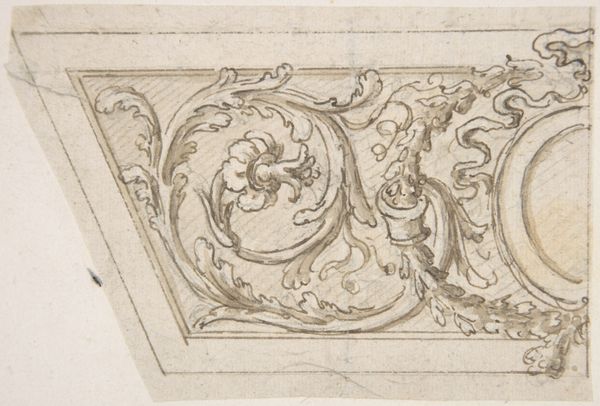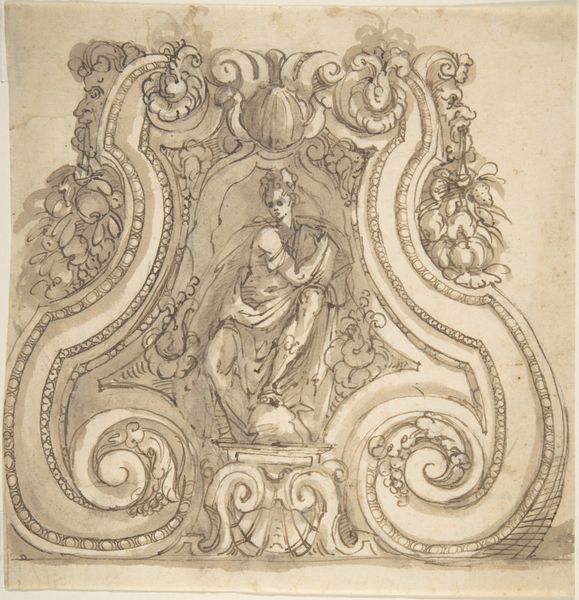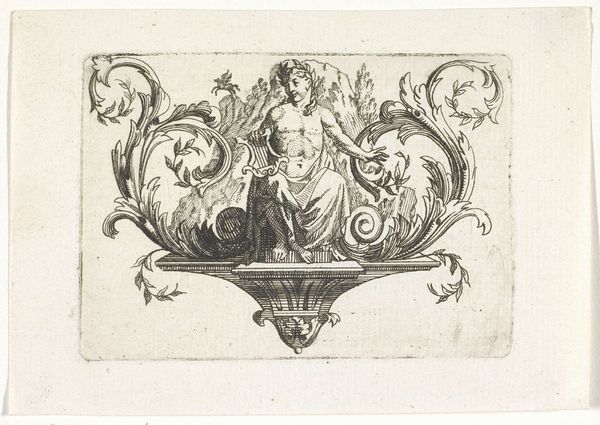
engraving
#
baroque
#
figuration
#
history-painting
#
engraving
Dimensions: height 68 mm, width 13 mm
Copyright: Rijks Museum: Open Domain
This "Cul-de-lampe met putti" was etched by Sébastien Leclerc I in the 17th century. Note the putti, or cherubic children, symbols of love and innocence, framing a central melon, all entwined with vines laden with grapes. These motifs are not new; they echo back to classical antiquity. Think of Bacchus, the Roman god of wine, whose entourage was often depicted with similar imagery, representing abundance and fertility. The putto is of particular interest, with roots stretching back to ancient Greece, reborn during the Renaissance, symbolizing divine love. Consider how these cherubic figures reappear across centuries, from ancient Roman sarcophagi to Renaissance paintings, each time imbued with evolving cultural meanings, shifting from pagan symbols to Christian allegories. This is a powerful force, engaging viewers on a deep, subconscious level with gestures that convey intense emotional states. These symbols have resurfaced, evolved, and taken on new meanings across various historical contexts, demonstrating their non-linear progression through time.
Comments
No comments
Be the first to comment and join the conversation on the ultimate creative platform.
